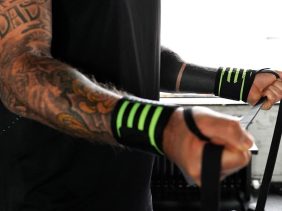Pelvic Floor Exercises: 5 at-home moves to power up
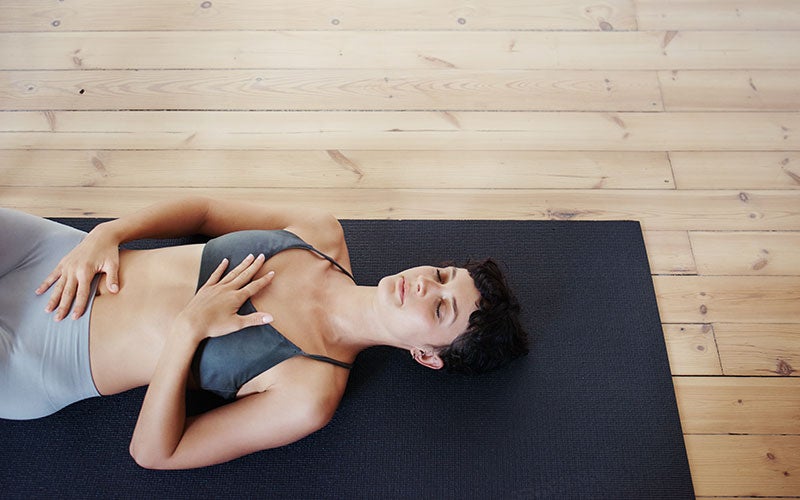 ©Nicola Katie
©Nicola Katie
Think pelvic floor exercises are just for post-childbirth recovery? That couldn’t be farther from the truth! Without a strong pelvis, everyone starts to feel weaker. Strengthen your power center with our top 5 moves!
What Is the Pelvic Floor Exactly?
The pelvic floor is a set of muscles in your pelvis running from your pelvic bone to your tailbone and stretching out to the sides. Strong pelvic floor muscles can improve your posture and take pressure off your spine, hips, and legs, so working on them is good for your well-being all around.
The pelvic floor sits at the bottom of the pelvis and has three main components1:
- Levator ani muscles
- Coccygeus muscles
- Fascia coverings of the muscles
Even though the anatomy of the pelvic floor muscles is slightly different depending on whether they’re supporting a uterus and vagina in addition to the bladder and bowel, everyone benefits from regular pelvic floor muscle exercises!
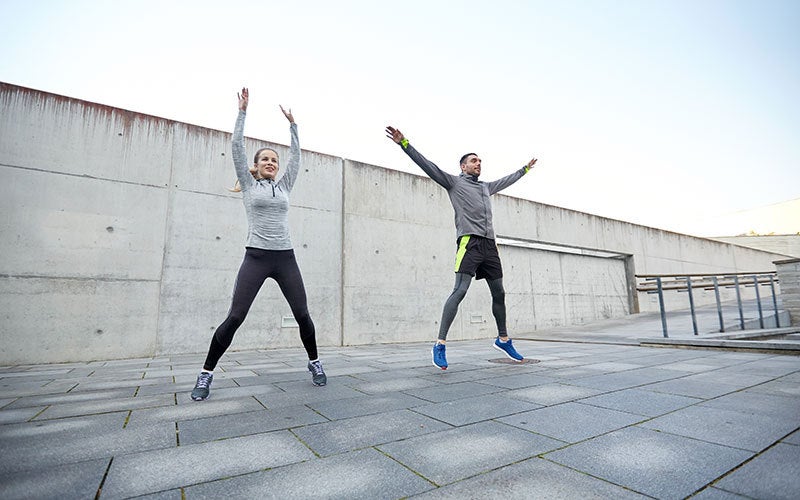
Why is the Pelvic Floor So Important?
While anyone who’s gone through pregnancy has often done pelvic floor exercises as part of physical therapy, those who haven’t tend to underestimate their importance in bowel and bladder control.
Like all other muscles, the pelvic floor muscles can tense and relax. One of its functions is reflexive holding: When you cough, sneeze, lift heavy things, laugh, or do jumping jacks and burpees, a pelvic floor contraction makes sure you don’t end up with urine leakage.
It also stabilizes the organs in the abdomen and pelvis, like your bladder, ensuring they stay in place. Pelvic floor muscle exercises are also part of any good core workout. This is because a strong power center increases the tone of your deep abs and supports the stability of your core, relieving pressure on your lumbar spine.
If you haven’t done kegel exercises you might not know how to contract these muscles: one quick way to find them is to squeeze to stop your urine flow. If you’re still having trouble isolating and contracting the pelvic floor muscles, don’t be afraid to ask your doctor for advice. They can recommend a device or even biofeedback with electrodes to help you find the right muscles to squeeze!
Once you’ve found them, give them a workout with our pelvic floor muscle training!
5 Pelvic Floor Exercises – From Easy to Advanced
It’s easy to do pelvic floor exercises at home and with little equipment. You may already know some of the following from your bodyweight sessions. Focusing on your deep core strength makes all the difference here.
Incorporate a few exercises into your workout every now and then, or make them their own exercise program. Each of these five exercises is great for just getting your lower back moving a bit, even without targeted kegel exercises.
Tip: This pelvic floor muscle training increases in difficulty, so it’s best to do the exercises in order. If you don’t do them as their own session, but incorporate one of them into your workout instead, start out by picking one that’s not too difficult.
#Exercise 1: Cat-Cow
This classic stretch is perfect for warm-up, cool-down, and pelvic floor training.

Here’s how:
- Begin on all fours, hands under shoulders, with a micro bend at your elbow, knees under your hips.
- Start the movement in your lower back and roll vertebra by vertebra from a hollow to hunched back and back again.
- During your inhalation, slowly squeeze the pelvic floor muscles.
- During your exhalation, gently release the muscles until they are completely relaxed, before starting the next repetition.
- Repeat 3 times.
# Exercise 2: Pelvic Rocking
Small movement, big effects, and it trains your body awareness as well. The interplay between tension and relaxation is key for this exercise. Hold each end position for a few seconds and consciously notice how your muscles feel.
Here’s how:
- Lie on your back with your legs bent into a pyramid shape: Knees fall in toward each other, feet stay mat-width. Place your hands on your lower abdomen.
- Tilt your pelvis ever so slightly so that your lower back is off the floor. Hold briefly, relax everything and release your weight into the mat.
- Now squeeze your pelvic floor like you would in kegel exercises! With just this slight muscle contraction – and a little help from your core muscles – you’ll manage to get your lower back flat on the mat again. Again, hold this position for a few seconds.
- 3 reps.
# Exercise 3: Pelvic Lift
Now that you can consciously tense your pelvic floor, it’s time for the slightly larger movements. This exercise works your back muscles more than just kegel exercises would.
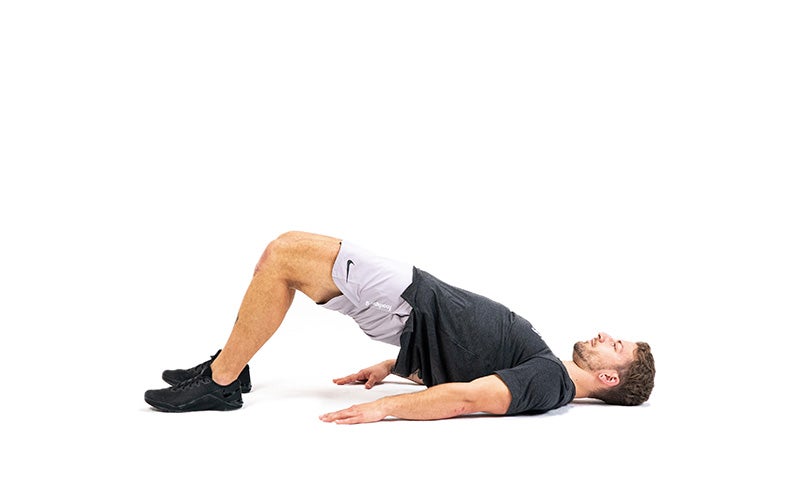
Here’s how:
- Lie on your back. Feet are flat on the floor, hip-width apart, with your fingertips almost reaching your heels.
- Tighten your pelvic floor while keeping your lower back on the mat.
- Like cat-cow, now roll up vertebra by vertebra. Inhale step by step and tense the pelvic floor muscles more.
- When you reach the top, push your hips up a little more – some muscle contractions in your legs and glutes may help.
- With your exhalation slowly roll down and release the tension in the pelvic floor muscles.
- 3 reps.
# Exercise 4: Bridge
Now it’s going to get more intense. This pelvic floor exercise also challenges your hamstrings, lower back, and glutes. Sitting for long periods of time keeps these muscles inactive and makes it difficult to actively open your hips. So this move gives you triple the benefits!
Here’s how:
- Start just like you did for the pelvic lift and roll your pelvis up.
- Hold it for three deep breaths and push your hips up. Let your whole core work with your back, legs, and glutes.
- Just like the pelvic lift, roll back down and relax completely. Pause here for 2-3 breaths.
- Do 3 reps.
# Exercise 5: Leg Circles
This move is for more advanced practitioners. The lateral movement trains your core muscles’ inter and intramuscular coordination, addresses your deep muscles, and improves strength and coordination in your power center, while toning connective tissue as well.
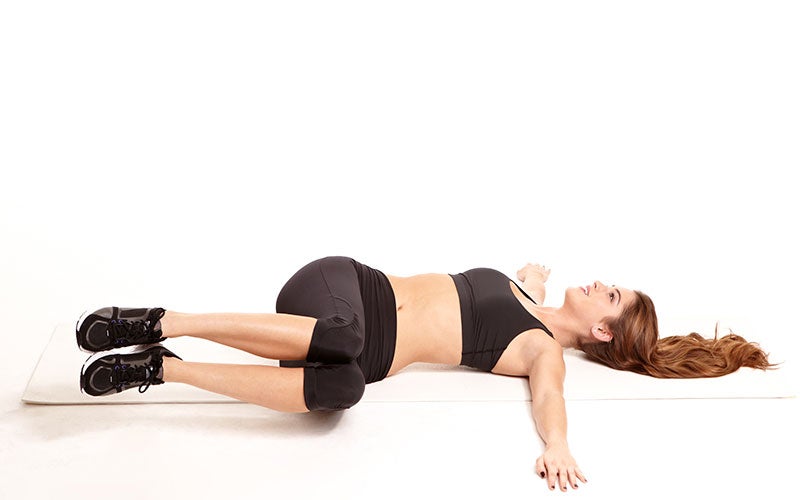
Here’s how:
- Lie on your back with your pelvic floor muscles tense, lower back on the floor. Knees and hips at right angles.
- Slowly lower your legs from the center to the right. Keeping your knees and hips in line, lower your knees to the floor very slowly. Relax here briefly, inhale and exhale once, come back to center and then switch sides.
- Too challenging? Then slow yourself down a bit with your hands or make it easier by adding a pillow to rest your legs on.
- 3 reps.
How Long Does it Take to Get the Pelvic Floor in Shape?
A sedentary lifestyle often dulls your conscious awareness of the pelvic floor muscles, as well as your abs and back. That’s why the first few days of pelvic floor training are about training your body awareness and getting a feeling for the control of the pelvic muscles.
You’ll notice the first effects of the routine after about 6 weeks on average. It’s also good to keep in mind that muscles grow more slowly as you get older, so the earlier you start regular pelvic floor exercises, the better.
The Right Way to Train
As with any sport, technique comes first in pelvic floor training. Focus on performing the exercises slowly and precisely. Breathe evenly, maintain core tension, and use your full range of motion.
This kind of exercise trains the pelvic floor muscles not only to tense, but also to relax. Constant tension in the pelvis is just as counterproductive as weak muscles. When you’re doing your exercises, concentrate on really letting go between each repetition. Keep breathing even while tensing.
With exercises that involve several muscle groups it can be especially tempting to cheat. When doing pelvic floor exercises, consciously focus on tensing the muscles for a few seconds when inhaling and relaxing them when exhaling.
Take extra care with postpartum workouts: The pelvic floor muscles are weakened by the stresses of pregnancy and childbirth. Get some advice from your midwife, OB, or a physical therapist before you start pelvic floor exercises.
How Often Should You Train?
It’s best to do pelvic floor exercises every day for a maximum of 10 minutes. You can train your pelvic floor muscles not only with our focused pelvic floor exercises, but also easily in everyday life.
Simply tense the pelvic floor while breathing in. Imagine you want to breathe from the bottom of your pelvis and take a deep, relaxed breath into your chest. As you exhale, let the air release slowly and the tension in the pelvic floor gradually release – as if you were slowly releasing air from a balloon.
Pelvic floor exercises: Less is more
Although pelvic floor exercises don’t look overly strenuous at first glance, you should still take it slow. If you want to improve your endurance, you don’t start by running 15 km twice a day.
If you overload the pelvic floor muscles, you run the risk of them forgetting to relax. Permanently increased tension in the pelvis can have a negative effect on your well-being and possibly trigger cramps.
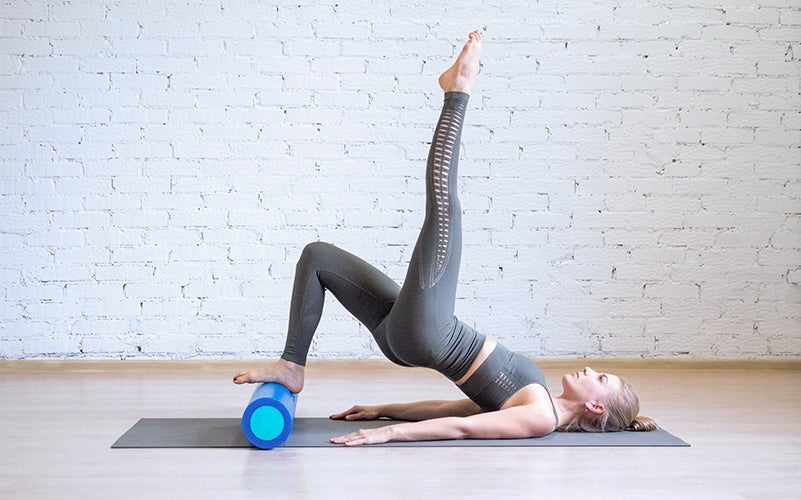
What Kind of Sports Should I Do?
Sports like jogging, volleyball, basketball, and other sports where you run or jump a lot put strain on your pelvic floor. Of course, stress strengthens muscles in general, but in these sports often you aren’t consciously tensing the pelvic floor, but passively straining it instead.
That’s why targeting your pelvic floor muscles is always a good idea. Add in time to focus specifically on your pelvic floor in your regular workout, even if you just do some kegel exercises in a standing position. Pilates, back strengthening exercises, and yoga are all perfect for keeping or getting your pelvic floor muscles in shape.
Conclusion
- The pelvic floor muscles stabilize organs in both the pelvic and abdominal cavities and can be divided into three components.
- Pelvic floor exercises aren’t just for women!
- Strong pelvic floor muscles can improve your posture and improve your well-being overall.
- A weak pelvic floor can cause problems in everyday life.
- It’s good to do pelvic floor exercises every day for 10-15 minutes.
Sources for this article
We at foodspring use only high-quality sources, including peer-reviewed studies, to support the facts within our articles. Read our editorial policy to learn more about how we fact-check and keep our content accurate, reliable, and trustworthy.



















